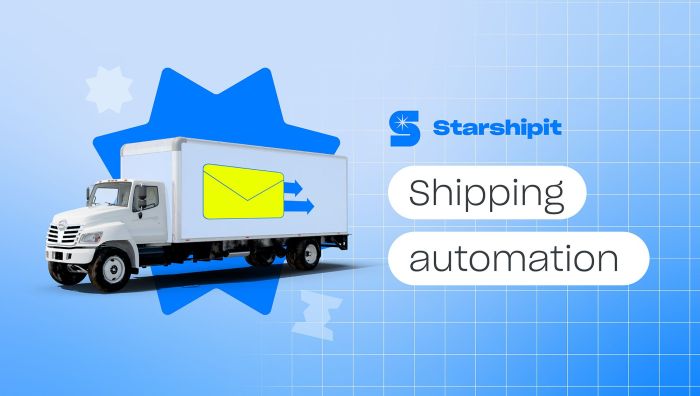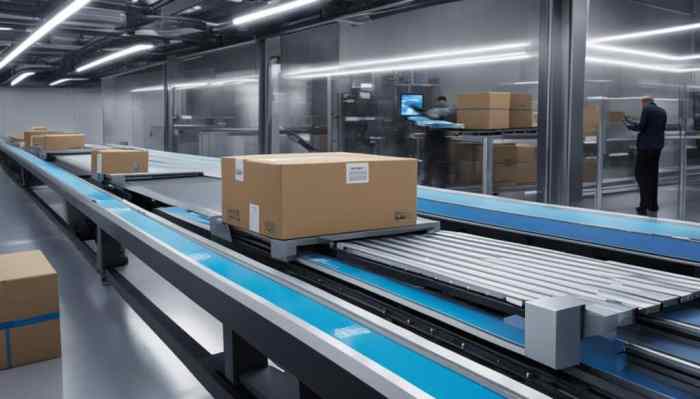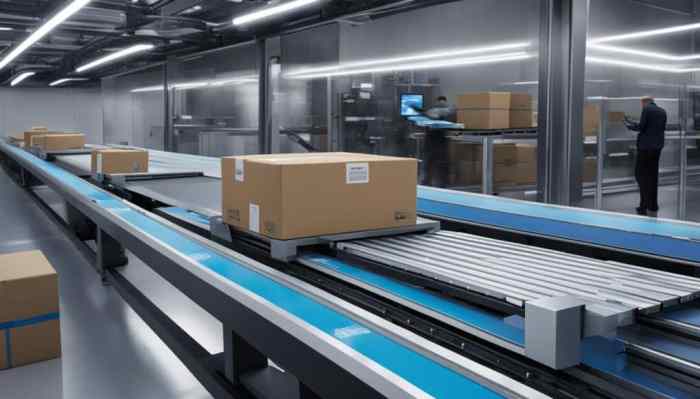Methods of Shipping a Car
Choosing the right method for shipping your car involves understanding the differences between open and enclosed transport. Both options offer distinct advantages and disadvantages concerning cost, transit time, and risk. This section details the processes and considerations for each.
Open Car Transport
Open car transport utilizes large, open-air carriers that can accommodate multiple vehicles simultaneously. This method is the more economical choice, but exposes your vehicle to the elements and potential damage from road debris. The process typically involves scheduling a pickup, preparing your vehicle (removing personal belongings and ensuring it’s roadworthy), the transport itself, and finally, delivery to your designated location.
Steps Involved in Open Car Transport
The steps involved in shipping a car via open transport are relatively straightforward. First, you’ll arrange the transport with a reputable company, providing details about your vehicle and desired pickup and delivery locations. Next, you’ll need to prepare your car by removing any valuable or sensitive items from the interior. After that, the carrier will pick up your vehicle on the scheduled date and time.
During transit, your car will be secured to the carrier. Upon arrival at the destination, you’ll receive notification and arrange for the final delivery.
Enclosed Car Transport
Enclosed car transport offers a higher level of protection for your vehicle. Your car is transported inside a sealed trailer, shielding it from weather conditions, road debris, and potential theft or vandalism. While more expensive than open transport, it provides peace of mind for those shipping valuable or classic cars. The steps involved are similar to open transport, but with the added benefit of increased security and protection during transit.
Steps Involved in Enclosed Car Transport
The process for enclosed transport mirrors that of open transport, beginning with scheduling and preparation. The key difference lies in the type of carrier used. Your car will be loaded into an enclosed trailer, ensuring complete protection throughout the journey. Once loaded, the trailer is sealed, providing an extra layer of security. The delivery process is similar to open transport, with notification and arrangement for final delivery to your specified location.
Cost and Benefits Comparison
Open transport is generally less expensive than enclosed transport, making it a budget-friendly option for many car owners. However, this comes at the cost of increased risk of damage from weather and road debris. Enclosed transport, while more costly, offers significantly reduced risk and greater peace of mind, particularly for high-value or classic vehicles. Transit times are generally similar for both methods, although unforeseen circumstances can impact delivery schedules for either.
Comparison Table: Open vs. Enclosed Car Transport
| Method |
Cost |
Transit Time |
Risk Level |
| Open Transport |
Lower |
Variable (typically 7-14 days, but can vary widely depending on distance and route) |
Higher (exposure to weather and road debris) |
| Enclosed Transport |
Higher |
Variable (typically similar to open transport, but may be slightly longer due to scheduling constraints) |
Lower (protected from weather and debris) |
Choosing a Shipping Company

Selecting the right auto transport company is crucial for a smooth and stress-free car shipping experience. A poorly chosen company can lead to delays, damage, and unexpected costs. Careful consideration of several key factors will help ensure a positive outcome.
Key Factors to Consider When Selecting a Car Shipping Company
Choosing a reputable car shipping company involves evaluating various aspects beyond just price. Factors such as the company’s reputation, insurance coverage, and licensing are paramount to protecting your vehicle and your investment. Considering these aspects proactively minimizes potential risks and ensures a smoother shipping process.
Verifying a Company’s Insurance and Licensing
Proper insurance and licensing are fundamental aspects to verify before entrusting your vehicle to any car shipping company. Adequate insurance protects your vehicle against damage during transit, while proper licensing ensures the company operates legally and adheres to industry standards. Lack of proper insurance or licensing could leave you vulnerable to significant financial losses in case of accidents or disputes.
Checking a company’s insurance certificates and license information independently through official state or federal databases is recommended. A reputable company will readily provide this information.
Comparing Different Types of Shipping Companies: Brokers vs. Direct Carriers
The car shipping industry involves two main types of companies: brokers and direct carriers. Brokers act as intermediaries, connecting you with carriers, while direct carriers own and operate their fleets of transport vehicles. Direct carriers often offer more control and potentially better communication throughout the shipping process, although they might not always be the cheapest option. Brokers, while potentially offering competitive pricing, might introduce an extra layer of communication and coordination, potentially increasing the chance of misunderstandings or delays.
The choice depends on your priorities: price, control, or a balance of both.
Questions to Ask Potential Car Shipping Companies
Before committing to a car shipping company, it’s essential to gather comprehensive information. Asking specific questions ensures transparency and clarifies expectations regarding pricing, insurance, and the overall shipping process. This proactive approach empowers you to make an informed decision and protect your interests.
- What type of insurance coverage do you offer, and what are its limits?
- Can you provide proof of your insurance and operating licenses?
- What is your process for handling damage claims?
- What is your estimated delivery timeframe, and what factors could affect it?
- What is your total cost, and what fees are included?
- What is your cancellation policy?
- What is your method of communication throughout the shipping process?
- Do you have any customer references or testimonials I can review?
- What is your process for handling unforeseen circumstances or delays?
- What is your company’s complaint resolution process?
Understanding the Shipping Process
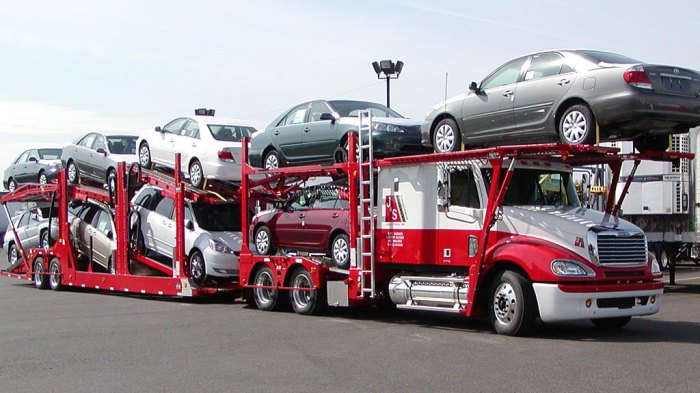
Shipping your car involves a series of coordinated steps, from the initial pickup at your location to the final delivery at your destination. A clear understanding of this process can help manage expectations and ensure a smoother experience. This section details the typical stages, the roles of involved parties, potential delays, and a sample timeline.The car shipping process is a collaborative effort between you, the shipping company, and the driver assigned to transport your vehicle.
Each party plays a crucial role in ensuring a successful and timely delivery.
Stages of the Car Shipping Process
The car shipping process typically unfolds in several distinct stages. First, the vehicle is inspected and prepared for transport. This might involve cleaning the exterior, noting pre-existing damage, and confirming the vehicle’s condition. Next, the car is loaded onto a carrier, either an open or enclosed trailer, depending on the chosen shipping method. During transit, the driver is responsible for safe operation and adherence to transportation regulations.
Upon arrival at the destination, the car is unloaded, inspected for any new damage, and then delivered to the designated location. Finally, the shipping process concludes with the completion of paperwork and confirmation of delivery.
The Roles of the Driver and the Shipping Company
The driver is responsible for the safe and timely transportation of your vehicle. This includes adhering to all traffic laws, maintaining the carrier’s condition, and ensuring the vehicle’s security throughout the journey. The shipping company, on the other hand, manages the entire process, from scheduling the pickup and delivery to handling logistics, communication, and addressing any unforeseen issues that may arise.
They are responsible for coordinating with the driver, providing updates to the customer, and resolving any complaints.
Potential Delays and Their Management
Several factors can contribute to delays in car shipping. Weather conditions, such as severe storms or heavy snow, can significantly impact transit times. Mechanical issues with the carrier or unforeseen traffic congestion can also cause delays. Furthermore, logistical challenges, such as port congestion or customs processing delays (for international shipments), can prolong the shipping process. In the event of a delay, proactive communication with the shipping company is crucial.
They can provide updates on the vehicle’s location and estimated time of arrival, offering transparency and peace of mind. Keeping records of all communications and documentation can be beneficial should further issues arise. In some cases, a delay may be unavoidable due to circumstances beyond the control of the shipping company, such as severe weather events.
Typical Car Shipping Timeline
Understanding the typical timeline can help set realistic expectations. This is an example and actual times may vary based on distance, route, and other factors.
- Scheduling and Pickup (1-3 business days): This involves arranging the pickup date and time with the shipping company. The company confirms the pickup location and any specific instructions.
- Transit Time (3-14 business days): The duration of transit depends on the distance between the origin and destination. Shorter distances will naturally result in quicker transit times.
- Delivery (1 business day): Upon arrival at the destination, the vehicle is unloaded and delivered to the specified location. The delivery typically includes a final inspection and completion of paperwork.
Insurance and Liability
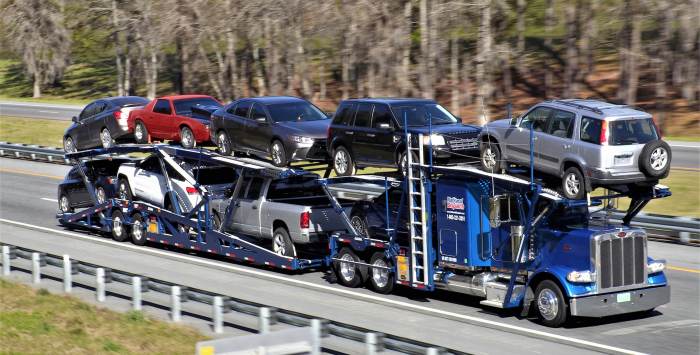
Shipping your car involves inherent risks, and understanding insurance coverage is crucial to protecting your investment. This section details the various insurance options available, the responsibilities of both the shipper and the carrier, and scenarios illustrating the importance of adequate insurance protection.
Types of Car Shipping Insurance Coverage
Several types of insurance coverage can protect your vehicle during transit. The most common include:
- Basic Liability Coverage: This typically covers only minimal damage or loss, often limited to a small percentage of the vehicle’s value. It’s usually included in the shipping price but offers limited protection.
- Full Value Coverage: This offers more comprehensive protection, covering the full value of your vehicle in case of damage or total loss. It’s more expensive than basic liability but provides significantly greater peace of mind.
- Released Value Coverage: This option sets a predetermined value for your car, usually a lower amount than its actual worth. The carrier’s liability is limited to this released value. This is generally the least expensive option.
It’s vital to carefully review the terms and conditions of each coverage type to understand the limitations and exclusions. Consider the age, make, model, and condition of your vehicle when choosing the appropriate level of coverage.
Shipper and Carrier Responsibilities
The shipper (the car owner) is responsible for accurately describing the vehicle’s condition before shipment and choosing an appropriate level of insurance. The carrier (the shipping company) is responsible for transporting the vehicle with reasonable care and in accordance with industry standards. If damage occurs, both parties have responsibilities that are often defined in the shipping contract. The carrier is typically liable for damages caused by their negligence, but this liability is often limited by the type of insurance chosen.
This is why choosing appropriate coverage is crucial for the shipper.
Situations Requiring Insurance
Insurance is particularly important in these scenarios:
- Shipping a high-value vehicle: Classic cars, luxury vehicles, or recently purchased vehicles often require full-value coverage due to their significant worth.
- Long-distance shipments: The longer the distance, the higher the risk of damage or loss during transit. More comprehensive insurance is recommended for these shipments.
- Shipping during inclement weather: Storms, floods, or other severe weather conditions can increase the risk of damage. Appropriate insurance can mitigate these risks.
- Using a less reputable carrier: If you’re using a less established or reviewed carrier, having comprehensive insurance can provide additional protection.
Claim Process Example
Imagine Sarah shipped her 2022 Porsche 911 Carrera using a carrier with full-value insurance. During transit, the vehicle sustained damage to its front bumper due to an accident involving the carrier’s truck. Sarah immediately contacted the carrier to report the damage and initiate a claim. She provided photos and documentation of the damage, a copy of her shipping contract, and her insurance policy details.
The carrier’s insurance adjuster inspected the vehicle, assessed the damage, and determined the repair cost. The insurance company then processed Sarah’s claim and covered the repair costs, restoring her Porsche to its pre-shipment condition. This example illustrates the importance of having adequate insurance and following the proper claim procedure.
International Car Shipping
Shipping a car internationally presents a more complex undertaking than domestic transport, demanding meticulous planning and adherence to various regulations. The differences stem primarily from the involvement of multiple countries, each with its own customs procedures, import duties, and documentation requirements. This section will detail the key distinctions and necessary steps for successfully shipping a vehicle across international borders.
Domestic versus International Car Shipping Procedures
Domestic car shipping typically involves a straightforward process: the vehicle is picked up from the origin, transported to the destination within the same country, and delivered. International shipping, however, adds layers of complexity. This includes navigating international borders, complying with different countries’ regulations, and managing additional documentation and potential delays associated with customs inspections and port procedures. The time frame for international shipping is also significantly longer than for domestic shipments, often extending from several weeks to several months depending on the distance and the efficiency of customs clearance.
Furthermore, the cost of international shipping is substantially higher due to increased logistical challenges, insurance premiums, and customs fees.
Documentation Required for International Shipments
International car shipping requires a more extensive set of documents compared to domestic transport. Beyond the standard bill of lading and proof of ownership, you’ll need documents such as a Certificate of Origin (COO), which verifies the country where the vehicle was manufactured. An export certificate, confirming the vehicle’s legal export from the country of origin, is also essential.
Import permits, varying by the destination country, may be required to allow the vehicle’s entry. Insurance documentation providing comprehensive coverage for the entire shipping process is crucial. Finally, a properly completed customs declaration form detailing the vehicle’s specifications and value is necessary for customs clearance. Failure to provide complete and accurate documentation can result in significant delays and penalties.
Customs and Import Regulations in International Car Shipping
Customs regulations differ significantly between countries. Each destination country has its own set of rules regarding the import of vehicles, including tariffs, taxes, and inspections. These regulations often cover aspects such as the vehicle’s age, make, model, emission standards, and safety features. Some countries may impose restrictions on the import of used vehicles, while others may have specific requirements for modifications or certifications.
Understanding these regulations beforehand is crucial to avoid unexpected delays or financial penalties. For example, importing a vehicle into the European Union may require compliance with specific emission standards, while importing into Japan might involve stringent safety inspections. Thorough research of the destination country’s regulations is therefore paramount.
Obtaining Necessary Permits and Certifications for International Shipping
Securing the necessary permits and certifications is a crucial step in international car shipping. This often involves contacting the relevant authorities in both the exporting and importing countries. For example, obtaining an export certificate usually requires submitting the vehicle’s title, proof of ownership, and potentially other documents to the relevant export agency in the country of origin. Import permits, on the other hand, are usually obtained from the customs authorities or relevant agencies in the destination country.
These permits may require providing detailed information about the vehicle, its intended use, and the importer’s details. The process can be time-consuming and may involve multiple steps, highlighting the importance of early planning and engagement with relevant authorities.
Cost Factors in Car Shipping
Shipping a car, whether across town or across the country, involves several cost factors that can significantly impact the final price. Understanding these factors allows you to make informed decisions and budget accordingly. This section details the key influences on car shipping costs, providing clarity on what to expect.
Distance
The distance your vehicle needs to travel is the most significant factor influencing the cost. Longer distances generally mean higher fuel costs for the transporter, increased driver expenses (including accommodation and time), and potentially greater risks, all leading to a higher price. For example, shipping a car from New York to Los Angeles will be considerably more expensive than shipping it from New York to Philadelphia.
The cost typically increases proportionally with distance, though not always linearly due to other contributing factors.
Vehicle Type and Size
The type and size of your vehicle directly impact shipping costs. Larger vehicles, such as SUVs, trucks, or vans, require more space on the carrier and therefore cost more to transport than smaller cars. The vehicle’s weight also plays a role; heavier vehicles cost more to ship due to increased fuel consumption and potential wear and tear on the carrier.
Specialty vehicles, such as classic cars or motorcycles, may also incur additional handling fees due to their unique requirements.
Shipping Method
The chosen shipping method significantly affects the cost. Open-carrier transport, where the vehicle is exposed to the elements, is generally the most affordable option. Enclosed transport, offering greater protection from the weather and potential damage, is more expensive. The cost difference can be substantial, sometimes doubling or tripling the price depending on the distance and vehicle type. Finally, expedited shipping, which prioritizes faster delivery, commands a premium price.
Additional Fees
Several additional fees can add to the overall cost. These can include:
- Terminal fees: Charges for loading and unloading the vehicle at terminals.
- Fuel surcharges: Adjustments to the price based on fluctuating fuel costs.
- Insurance costs: The cost of insuring your vehicle during transit.
- Documentation fees: Costs associated with paperwork and customs clearance (for international shipping).
- Pickup and delivery charges: Fees for picking up your vehicle from your location and delivering it to your destination. This can be particularly significant if your location is remote or difficult to access.
Careful consideration of these potential additional costs is crucial for accurate budgeting.
Cost Breakdown Examples
The following table provides estimated cost breakdowns for different shipping scenarios. These are illustrative examples and actual costs may vary depending on the specific circumstances and the chosen shipping company.
| Scenario |
Distance (miles) |
Method |
Estimated Cost (USD) |
| Small car, coast-to-coast |
2,500 |
Open carrier |
$1,000 – $1,500 |
| SUV, regional transport |
500 |
Enclosed carrier |
$600 – $900 |
| Truck, cross-country |
3,000 |
Open carrier |
$1,500 – $2,500 |
| Classic car, short distance |
100 |
Enclosed carrier |
$300 – $500 |
